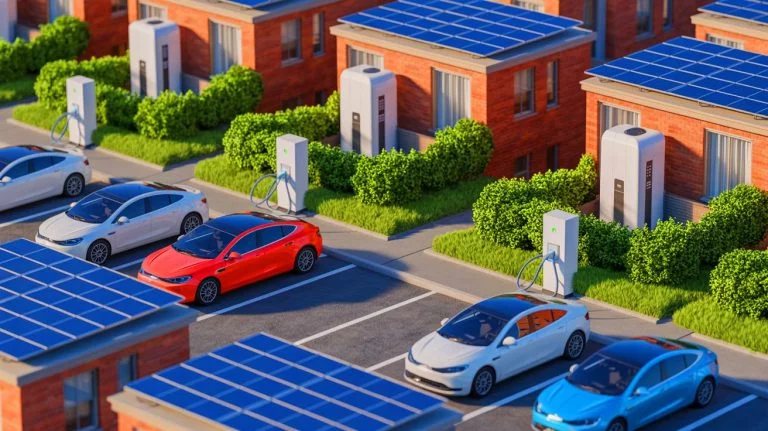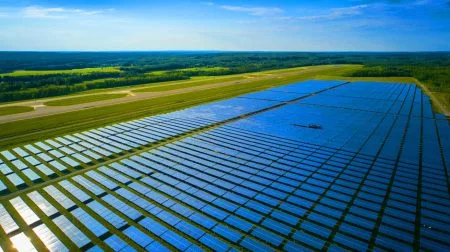| IN A NUTSHELL |
|
The electrification of cities is undergoing a transformative journey that promises to reshape urban landscapes into sustainable powerhouses. By integrating electric vehicles (EVs) and household hot water systems, cities like Canberra can transition from being energy consumers to acting as giant batteries. This shift opens up avenues for balancing peak demand and leveraging renewable energy sources more effectively. A recent study by the Australian National University (ANU) illustrates how intelligently managed energy systems can significantly bolster the electricity grid, enabling a seamless transition to a cleaner energy future.
Reimagining Energy Storage in Urban Areas
In fully electrified cities, the potential for energy storage is immense. According to researchers, residents could access approximately 46 kilowatt-hours (kWh) of energy storage, akin to owning three to four Tesla Powerwall batteries. This capacity allows urban residents to manage energy consumption effectively, especially during peak periods. The study highlights that through strategic load management, such as staggering EV charging and heating times, cities can alleviate pressure on the electricity grid.
By shifting energy usage to off-peak hours, urban infrastructures can transform into flexible tools for grid stability, storing energy during low-demand periods and redistributing it when demand peaks. This methodology not only reduces infrastructure stress but also optimizes the use of rooftop solar power, particularly during the evening when energy demand typically surges.
Clean Grid Support: A Path to Sustainability
One of the critical challenges in reducing greenhouse gas emissions is the electrification of transport and heating systems. Together, these sectors contribute significantly to global emissions. Transitioning them to clean energy sources is a crucial step toward sustainability. With over 17 million electric cars sold in 2024 and heat pump capacity reaching 1,000 gigawatts by 2021, the momentum for change is evident.
Distributed Energy Storage (DES) plays a vital role in this transition. By using local energy storage solutions like car batteries and hot water tanks, cities can efficiently manage energy use. This approach not only supports the electricity grid by shifting energy consumption to less busy times but also maximizes the efficiency of solar and wind energy. The Australian Capital Territory (ACT), running on 100% renewable electricity, serves as a model for studying these dynamics, aiming for net-zero emissions by 2045 through electrified transport and heating.
Balancing Energy Demand with Batteries
The potential of distributed energy storage in urban settings is profound. By managing the timing of EV charging and hot water heating, residents can shift approximately five kWh of electricity to off-peak periods. This shift equates to about one-third of daily per-person electricity use, offering substantial opportunities to support the grid during high-demand times.
However, the increase in electric loads from vehicles and heating systems could significantly escalate peak demand, necessitating costly upgrades to power networks if not managed properly. Strategic load shifting, by moving half of this demand to off-peak hours, could halve the peak demand surge, easing infrastructure stress and enhancing the use of solar energy.
Urban Storage Hotspots and Future Prospects
The study identifies urban “storage hotspots”—areas characterized by dense employment and high demand flexibility. These zones present ideal conditions for implementing smart workplace charging, dynamic pricing, and coordinated device control through digital platforms. Such innovations promise to optimize energy use, reduce costs, and support the transition to renewable energy sources.
By mapping energy use across suburbs and tracking it hourly, researchers gain insights into how distributed energy storage can be optimized. This data-driven approach is essential for planning future energy systems, ensuring cities become cleaner, more reliable, and cost-effective as they move toward full electrification. The findings, published in the journal Renewable Energy, underscore the critical role of strategic energy management in urban sustainability.
As cities continue to evolve and embrace electrification, the role of distributed energy storage becomes increasingly pivotal. This transformation not only supports grid stability but also paves the way for a sustainable urban future. How can we further harness technology and innovation to ensure that our cities become resilient and energy-efficient powerhouses?
Did you like it? 4.6/5 (24)








Is this even legal? 🤔 Who decides if my car gets used as a battery?
Great article! Thanks for shedding light on an important topic. 🌟
Sounds like a great idea, but what if I need to use my car suddenly? 🚗💨
Why is it always the consumer who has to adapt? Can’t the grid be improved?
This is a disaster waiting to happen. Who’s responsible if my car battery gets damaged?
What about people who live in apartments without EVs? How does this benefit them?
I’m skeptical. Won’t this just make electricity more expensive in the long run?
So, are we going to get compensated for this? 💰
Thank you for a thorough analysis. It’s crucial to discuss these impacts.
Ah yes, because clearly we don’t already pay enough for our cars.